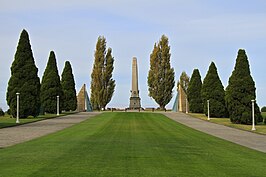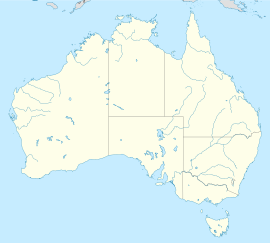Hobart
|
Hobart Tasmania |
||||||||
|---|---|---|---|---|---|---|---|---|
Left to right from top: Hobart CBD; Wrest Point Hotel Casino; Salamanca Market; the Cascade Brewery, Tasman Bridge, Hobart Cenotaph
|
||||||||
| Coordinates | 42°52′50″S 147°19′30″E / 42.88056°S 147.32500°ECoordinates: 42°52′50″S 147°19′30″E / 42.88056°S 147.32500°E | |||||||
| Population | 221,000 (2015) (11th) | |||||||
| • Density | 124.8/km2 (323/sq mi) (2011) | |||||||
| Established | 20 February 1804 | |||||||
| Area | 1,695.5 km2 (654.6 sq mi) | |||||||
| Time zone | AEST (UTC+10) | |||||||
| • Summer (DST) | AEDT State: Tasmania. (UTC+11) | |||||||
| Location |
|
|||||||
| State electorate(s) | Denison, Franklin | |||||||
| Federal Division(s) | Denison, Franklin | |||||||
|
||||||||
Hobart (![]() i/ˈhoʊbɑːrt/) is the capital and most populous city of the Australian island state of Tasmania. It is the least populated state capital in Australia. Founded in 1803 as a penal colony, Hobart is Australia's second oldest capital city after Sydney, New South Wales. The city is located in the state's south-east on the estuary of the Derwent River, making it the most southern of Australia's capital cities. Its harbour forms the second-deepest natural port in the world.
i/ˈhoʊbɑːrt/) is the capital and most populous city of the Australian island state of Tasmania. It is the least populated state capital in Australia. Founded in 1803 as a penal colony, Hobart is Australia's second oldest capital city after Sydney, New South Wales. The city is located in the state's south-east on the estuary of the Derwent River, making it the most southern of Australia's capital cities. Its harbour forms the second-deepest natural port in the world.
In June 2015, the city had a greater area population of approximately 221,000. Its skyline is dominated by the 1,271-metre (4,170 ft) Kunanyi/Mount Wellington, and much of the city's waterfront consists of reclaimed land. It is the financial and administrative heart of Tasmania, serving as the home port for both Australian and French Antarctic operations and acting as a major tourist hub, with over 1.192 million visitors in 2011/2012. The metropolitan area is often referred to as Greater Hobart, to differentiate it from the City of Hobart, one of the five local government areas that cover the city.
...
Wikipedia







